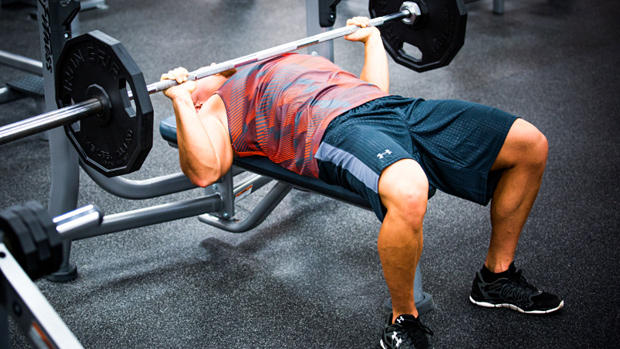Supersets are a great way to help build strength and muscle time efficiently.

Sometimes called paired sets, supersets are a form of strength training in which a set of repetitions of usually two exercises is performed, back-to-back with minimal between them. The exercises typically target opposing muscle groups – namely the agonists (the force-generating muscles) and the antagonists (the muscle that relaxes when the agonist contracts). For example, bench press (where the pectoralis major are the agonists and the rhomboids are the antagonists) would typically be followed by seated cable row (where the rhomboids are the agonists and the pectoralis major the antagonist) to make up a superset.
Supersets can also be set up as compound sets, in which two exercises engaging the same muscle group are performed back-to-back, and as contrast training, in which two similar exercises are paired to increase power, the first performed with a heavier load, while the second is performed explosively with a lighter load – such as heavy squats followed by vertical jumps. Other popular ways to Superset exercises are:
- Upper and lower body exercises performed in succession,
- Big exercises performed with small exercises,
- 3 exercises paired together.
When super setting, we typically number the exercises as 1a, 1b, etc.
- 1a) Bench Press
- 1b) Seated Cable Row
Research
Research compared the effect of performing exercises in a traditional sequence (e.g. completing four sets of bench presses before moving onto the next exercise) and as supersets. (1) Superset workouts were obviously faster and required the body to use more stored energy (such as fat and carbohydrates) during exercise, and for an hour afterwards. (1) This increases fat burning and may lead to more muscle gain as supersets mean more work is performed. (4)
Supersets required a person to work 8% harder than traditional sets completing more resistance training in the same or less time. (6) Working harder burned more calories during and after exercise. Another study had participants perform a pair of pull-push exercises (bench pull and bench press) in both traditional format and as supersets. We controlled rest periods for all types of exercise to two minutes, ensuring each training session only lasted ten minutes. They found that supersets allowed participants to work harder as they were able to complete more reps in ten minutes compared to the traditional format. Completing more work in the same time requires greater effort, which could potentially lead to greater strength and muscle gains (still unproven).
The order in which you perform superset exercises impacts performance. According to traditional programming, the recommendation is to perform the largest and most powerful exercises earlier in a program. Reducing intensity (with lighter weights), while increasing volume (with more repetitions) enhances hypertrophy over the long-term, while low volume, high-intensity supersets is better for developing maximal strength and power. Traditional training techniques are recommended for maximal strength gains to maximise intensity of the lifts and rest between sets. Results will depend on the combination of the number of sets, reps, load and rest periods performed.
Many of the superset studies used different exercise intensities and had people lift different volumes of weights, making it hard to properly compare results. Most superset studies have only looked at the effects in the short-term, during a single exercise session.

Conclusions
Current evidence shows supersets allow more work to be completed in less time. This has the potential to burn more calories, both during and after the training session. The intensity, or loads lifted, and volume, or number of sets and reps, can affect these benefits. Additionally, the order of exercises within the superset may also be crucial for maximizing benefits.
References
The metabolic costs of reciprocal supersets vs. traditional resistance exercise in young recreationally active adults
The Effects of Superset Configuration on Kinetic, Kinematic, and Perceived Exertion in the Barbell Bench Press
Agonist-antagonist paired set resistance training: a brief review
Maximizing Muscle Hypertrophy: A Systematic Review of Advanced Resistance Training Techniques and Methods
Hypotensive Responses of Reciprocal Supersets versus Traditional Resistance Training in Apparently Healthy Men
The effect of an upper-body agonist-antagonist resistance training protocol on volume load and efficiency
You may also enjoy reading Bulking Up and Gaining Strength, or 12 Tips For Successful Sport Coaching. Have you thought about studying a Certificate III in Fitness, Certificate IV in Fitness.
